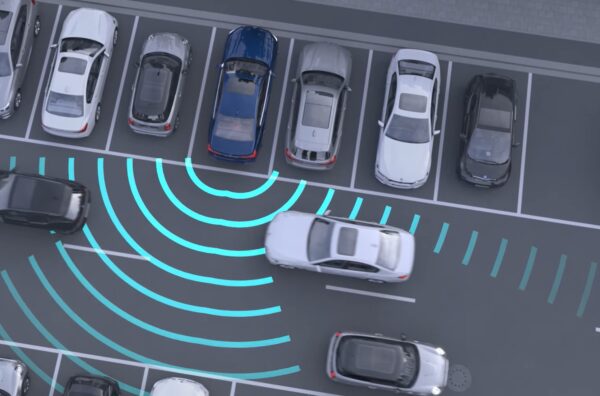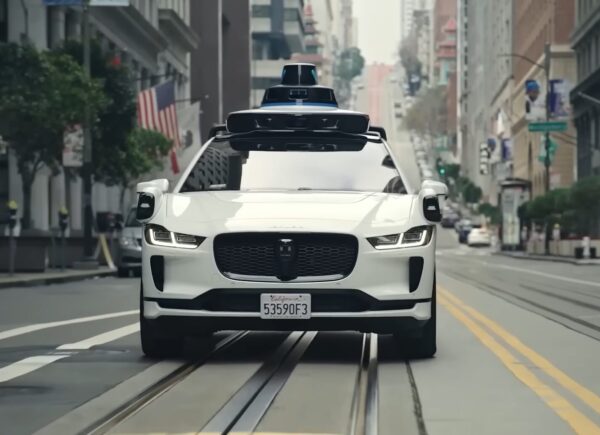Advanced driver-assistance system
Table of Contents
1. Introduction of ADAS Technology
An advanced driver-assistance system (ADAS) consists of tools designed to help drivers operate vehicles safely. Using a human-machine interface, ADAS enhances both vehicle and road safety. It employs automated features like sensors and cameras to identify nearby obstacles or mistakes made by drivers, and then takes appropriate actions. ADAS has the capability to facilitate different degrees of autonomous driving. If you want to know ADAS Technology in Details lets begin.
In a research report in 2021, it was revealed that around 33 percent of newly purchased vehicles in the United States, Europe, Japan, and China were equipped with ADAS features. Additionally, the firm forecasted that by 2030, half of all vehicles on the road would have ADAS capabilities.
2. History of ADAS Technology

ADAS technology emerged in the 1970s alongside the introduction of the anti-lock braking system. Initial ADAS features comprised electronic stability control, anti-lock brakes, blind spot information systems, lane departure warning, adaptive cruise control, and traction control. The functionality of these systems can be influenced by mechanical alignment adjustments or damage resulting from a collision. Consequently, numerous manufacturers now stipulate automatic resets for these systems after a mechanical alignment, although this statement lacks a cited source.
3. ADAS Technology in Details

The distinction between ADAS and driver-assistance systems (DAS) lies in their reliance on external environment data rather than internal data. ADAS draws inputs from various sources such as automotive imaging, LiDAR, radar, image processing, computer vision, and in-car networking. Additionally, it can incorporate inputs from external sources like other vehicles (vehicle-to-vehicle or V2V communication) and infrastructure (vehicle-to-infrastructure or V2I communication). Modern cars typically integrate ADAS into their electronics, with manufacturers having the option to add features during design or via over-the-air (OTA) updates post-production.

ADAS operates as real-time systems, reacting promptly to multiple inputs and prioritizing incoming information to prevent accidents. These systems employ pre-emptive priority scheduling to determine which tasks take precedence. Mismanagement of these priorities can lead to adverse outcomes rather than benefiting the driver.
3.1 Levels of ADAS
| Level | Description | Example Features |
| 0 | Information Provision | Parking sensors, Traffic sign recognition |
| 1 | Hands-On/Shared Control | Adaptive cruise control, Lane departure warning |
| 2 | Hands-Off | Highway assist, Autonomous obstacle avoidance |
| 3 | Eyes-Off | Highway chauffeur |
| 4 | Mind-Off | Automated valet parking |
| 5 | Steering Wheel will be Optional here | Completely autonomous driving |
This table outlines the various levels of ADAS based on the degree of automation, along with examples of features associated with each level.

4. Alerts AND ADAS Features
| ADAS Features | Description |
| Blind Spot Monitors | These systems rely on cameras to detect objects in blind spots around the vehicle and warn the driver. They work alongside emergency braking systems and rear cross-traffic alerts for added safety. |
| Driver Drowsiness Detection | Designed to prevent accidents caused by driver fatigue, these systems analyze various factors like facial expressions, steering patterns, and driving behavior to detect signs of drowsiness. |
| Driver Monitoring Systems | These systems assess the driver’s level of alertness by monitoring physiological and performance indicators, often using infrared sensors and cameras to track eye movements and attentiveness. |
| Electric Vehicle Warning Sounds | Emitting audible signals, these systems alert pedestrians and cyclists to the presence of nearby hybrid or electric vehicles, ensuring their safety in environments with reduced vehicle noise. |
| Forward Collision Warning Systems | These systems monitor the vehicle’s speed and distance from the vehicle in front, alerting the driver of potential collisions and promoting safer driving practices. |
| Intelligent Speed Adaptation Systems | Designed to assist drivers in adhering to speed limits, these systems provide warnings or automatically adjust vehicle speed based on real-time information about the road and surrounding conditions. |
| Intersection Assistants | Equipped with radar sensors, these systems detect approaching vehicles at intersections, exits, or parking areas, alerting the driver and taking emergency braking action if necessary to prevent accidents. |
| Lane Departure Warning Systems | These systems use cameras to detect lane markings and alert the driver when the vehicle unintentionally drifts out of its lane, helping to prevent lane departure accidents. |
| Parking Sensors | Employing sensors, these systems scan the vehicle’s surroundings for obstacles and provide audio warnings to assist drivers during parking maneuvers, enhancing safety during parking operations. |
| Tire Pressure Monitoring Systems | Keeping track of tire pressure, these systems notify the driver of any deviations from normal levels, helping to prevent tire-related accidents and ensuring optimal vehicle performance. |
| Vibrating Seat Warnings | Using tactile feedback, these systems alert the driver to potential hazards by vibrating the seat in the direction of the danger, such as lane drift or imminent collision, enhancing situational awareness. |
| Wrong-Way Driving Warning Systems | These systems use sensors and cameras to detect when a vehicle is traveling in the wrong direction, issuing alerts to the driver to prevent accidents caused by incorrect lane usage or entering highways improperly. |

5. Concerns
According to PACTS, the absence of full standardization could lead to confusion for drivers, who might mistakenly assume that one car’s ADAS behaves similarly to another’s.
ADAS systems may face various limitations. For example, a pre-collision system might require lengthy explanations due to numerous exceptions where it may operate when unnecessary or fail to operate when a collision is imminent.
Naming conventions for ADAS features lack consistency among car manufacturers. For instance, adaptive cruise control is known as Adaptive Cruise Control by some brands, Intelligent Cruise Control by others, and DISTRONIC by Mercedes. To address this, SAE International has collaborated with various organizations to establish generic ADAS terminology.
The lack of standardization extends to buttons and dashboard symbols, which vary across different vehicles.
ADAS behavior can also differ from one vehicle to another. For example, while most cars temporarily override the speed of adaptive cruise control, some may switch to standby mode after a minute.
5.1 .Insurance conflicts
| Insurance | Description |
| Technology Errors and Omissions | Covers physical risks arising from technology failures, including expenses related to incidents such as car crashes. |
| Auto Liability and Physical Damage | Provides coverage for third-party injuries and damage to technology. |
| Cyber Liability | Protects companies from lawsuits and regulatory penalties stemming from cybersecurity breaches by third parties. |
| Directors and Officers | Safeguards a company’s assets and balance sheet by offering coverage against instances of mismanagement or asset misappropriation by directors and officers. |
6. Future
The table outlines two key systems in the realm of transportation technology i.e 1. Intelligent Transportation Systems (ITS) and 2. Driver Assistance Systems (DAS). Both systems aim to improve transportation safety and effectiveness through different means, catering to various aspects of modern transportation needs.

| System | Description |
| Intelligent Transportation Systems (ITS) | Intelligent transportation systems (ITS) bear a resemblance to ADAS but expand beyond mere traffic automation. They encompass any technology that facilitates safe human transportation. By integrating transportation technology with a city’s infrastructure, ITS paves the way for the development of “smart cities.” These systems prioritize safety and efficiency, potentially boosting road capacity by an estimated 22.5%. ADAS has played a role in enhancing safety, as demonstrated by a study conducted in 2008. ITS leverages various communication technologies, including both wireless and traditional methods, to enhance productivity and effectiveness. |
| Driver Assistance Systems (DAS) | Driver assistance systems (DAS) refer to a proposed regulatory framework for ADAS. These systems enable hands-free driving but raise concerns about driver attentiveness. Proposed regulations such as DAS would permit the use of advanced driving systems like Tesla’s Full Self-Driving (FSD) in Europe. According to the UNECE proposal, DAS aims to ensure that drivers retain responsibility for driving tasks, maintain hands on the wheel, and monitor visual engagement. |
Credits / Source / Reference
Source 1. Galvani, Marco (2019-02-04). “History and future of driver assistance”. IEEE Instrumentation Measurement Magazine 10.1109/MIM.2019.8633345. ISSN 1941-0123. S2CID 59600916
Source 2. S-Class | Conditionally Automated Driving with the DRIVE PILOT https://youtu.be/1gjweWq8qAc?si=rIwXiuUjm0HuDeAa
Source 3. Assisted Driving Plus | BMW Driver’s Guide https://www.youtube.com/watch?v=1W4EuP_Zx-Y
FAQ
You May Also Like Limited Edition : Mercedes AMG A 45 S 4MATIC+ 2024
You Can Connect with me here – https://twitter.com/BestcarinInfo






